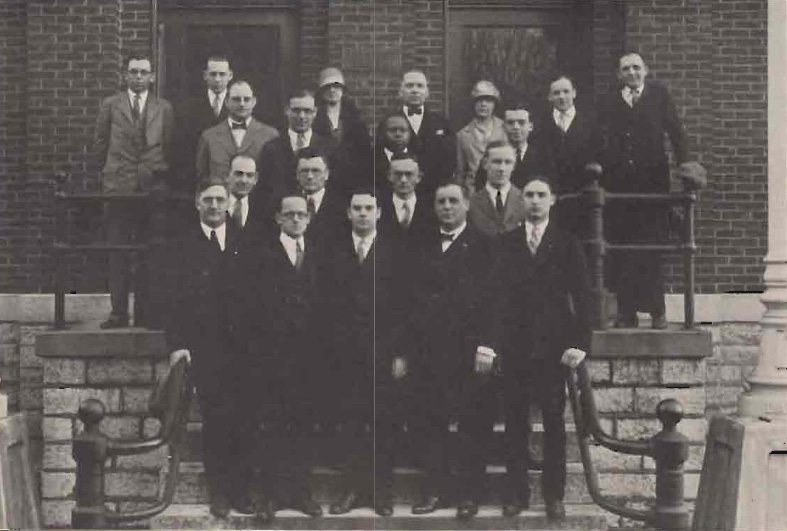Dayton Docket

School of Law Marks 100 Years Since Its Beginning
Just after five o’clock on an unusually hot afternoon for early October, students drifted out of the nearly 90 degree heat into a not much cooler University of Dayton classroom aware they were taking part in a first for the institution, but not knowing if their contribution would have any more staying power than the unseasonal temperatures they’d just sweated through to get there.
Now, 100 years later, the University of Dayton School of Law is remembering those beginnings that even as they seemed to end sooner than first hoped have actually had an impact that can still be felt today.
The anticipation around the opening of the law school started in June 1922 when Father Tetzlaff mentioned it in his remarks at the University’s graduation. The next day an article in the Dayton Herald picked up on those comments with the headline, “School Of Law To Be Opened At University.”
A few days after that a larger article appeared in the Dayton Daily News talking about plans for the law school. According to the article, the dean was to be John C. Shea, who was president of the Montgomery County Bar Association. Classes would be held three times a week from 5 to 8 p.m. and the course of study would take four years to complete. Later articles mentioned the at the time noteworthy fact that women would be among those admitted to the law school.
The law school’s first orientation was held at the end of September on the eve of classes starting. According to the Dayton Herald, 32 people showed up to learn more about what the law school would be like. Unlike today when students often enroll months before classes start, registration then was to be held right before the first class.
But even in the 100 years since that first class, some things about law school haven’t changed, like the challenge of learning to think like a lawyer.
Writing in 1926 in The Daytonian, the University’s yearbook, the students looked back on their first year of law school in 1922: “Then followed our academic struggles. The sole encounter of the year was with that thorn of distress, known as ‘that never ending, ever increasing list of cases.’”
But the students would overcome those academic struggles and make it through law school. In 1926 the school conferred degrees on its first 20 graduates. It was a diverse class for its time with a black student, Herbert C. Morton, and two women, Viola Allen and Mildred McCarthy, among the graduates. It was also a successful class. According to the Dayton Daily News, all 19 students who took the Ohio Bar Exam passed it.
The law school soon built on that success with every graduate passing the bar exam in the school’s first several years of existence, except for reportedly one of the school’s brightest students who became overly nervous during their first try at the exam. They would pass on a subsequent try.
In 1930 the law school added morning classes to its night classes, allowing students to complete their degree in three years instead of four, as it continued to take steps toward receiving accreditation from the American Bar Association. But at that point, the impacts of the Great Depression were beginning to be felt by the entire University, so hiring the additional faculty needed to meet the American Bar Association’s standards wasn’t an option. Also, Dean John C. Shea was injured in a railcar accident and had to step down. In 1933 it was determined to close the law school. The students already taking classes were allowed to continue with the final class graduating in 1935.
Despite the law school’s closure, its graduates would go on to be great examples of its lasting impact, serving their communities with the skills they learned at Dayton Law. Eventually those graduates would play a role in the law school’s reopening in 1974. Early graduates like Joseph Keller ’29 were pivotal in making sure this version of the law school would last. Keller, who not only graduated from Dayton Law but also later served as the early law school’s secretary, made a significant contribution that led to the construction of a new law school building. Joseph E. Keller Hall was opened in 1997 as a state-of-the-art facility and remains the law school’s home today.
Thanks to the efforts of those like Keller, the School of Law will celebrate the 50th anniversary of its reopening in 2024.
Thoughts of the law school’s future were likely only secondary to those first students on that hot October evening in 1922. Their minds were on the more immediate concern of what class would be like. But today their legacy lives on in the form of the countless students who have attended the School of Law through the years, acting on the same motivations of those first students 100 years ago to master the law and use it to improve their world.
